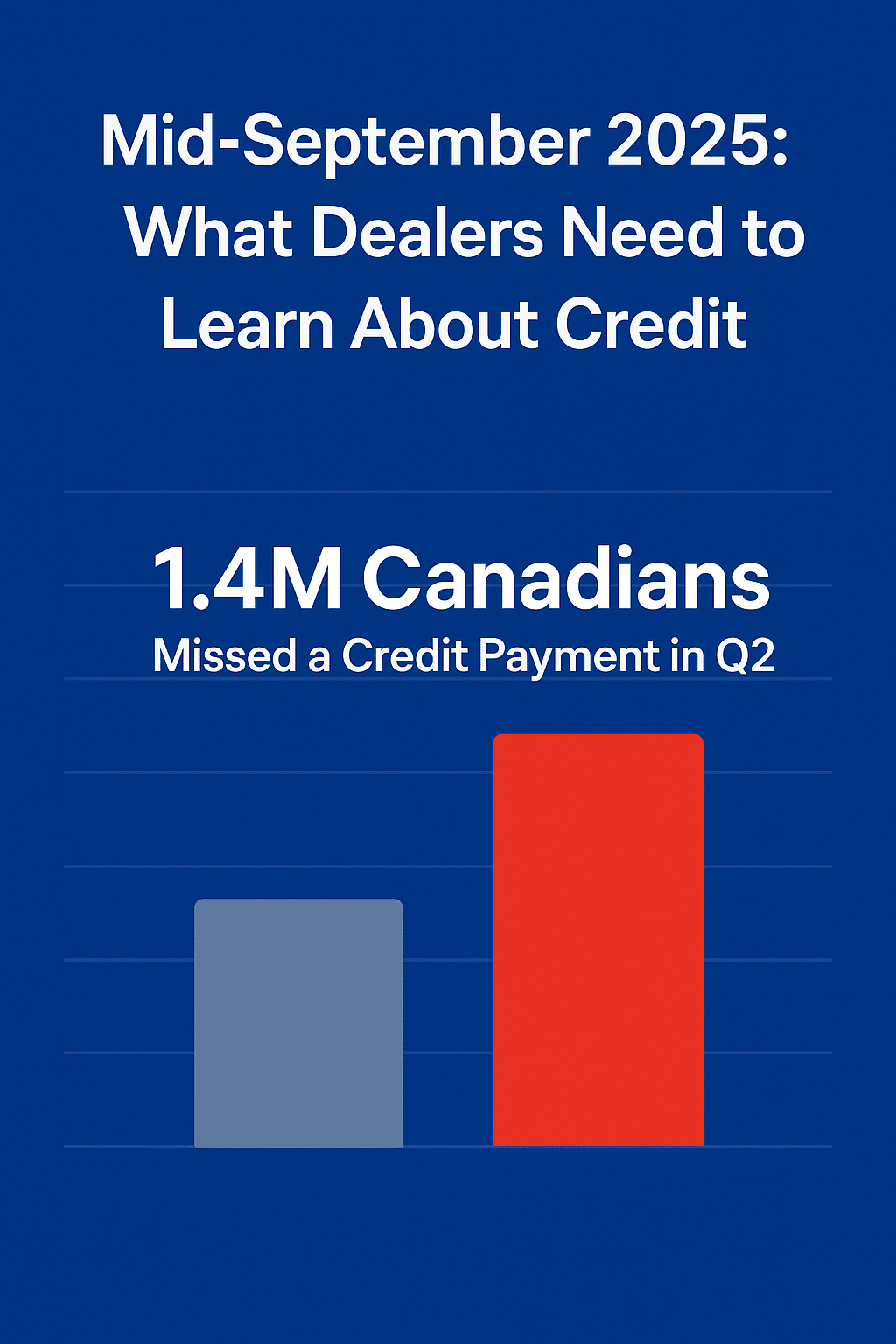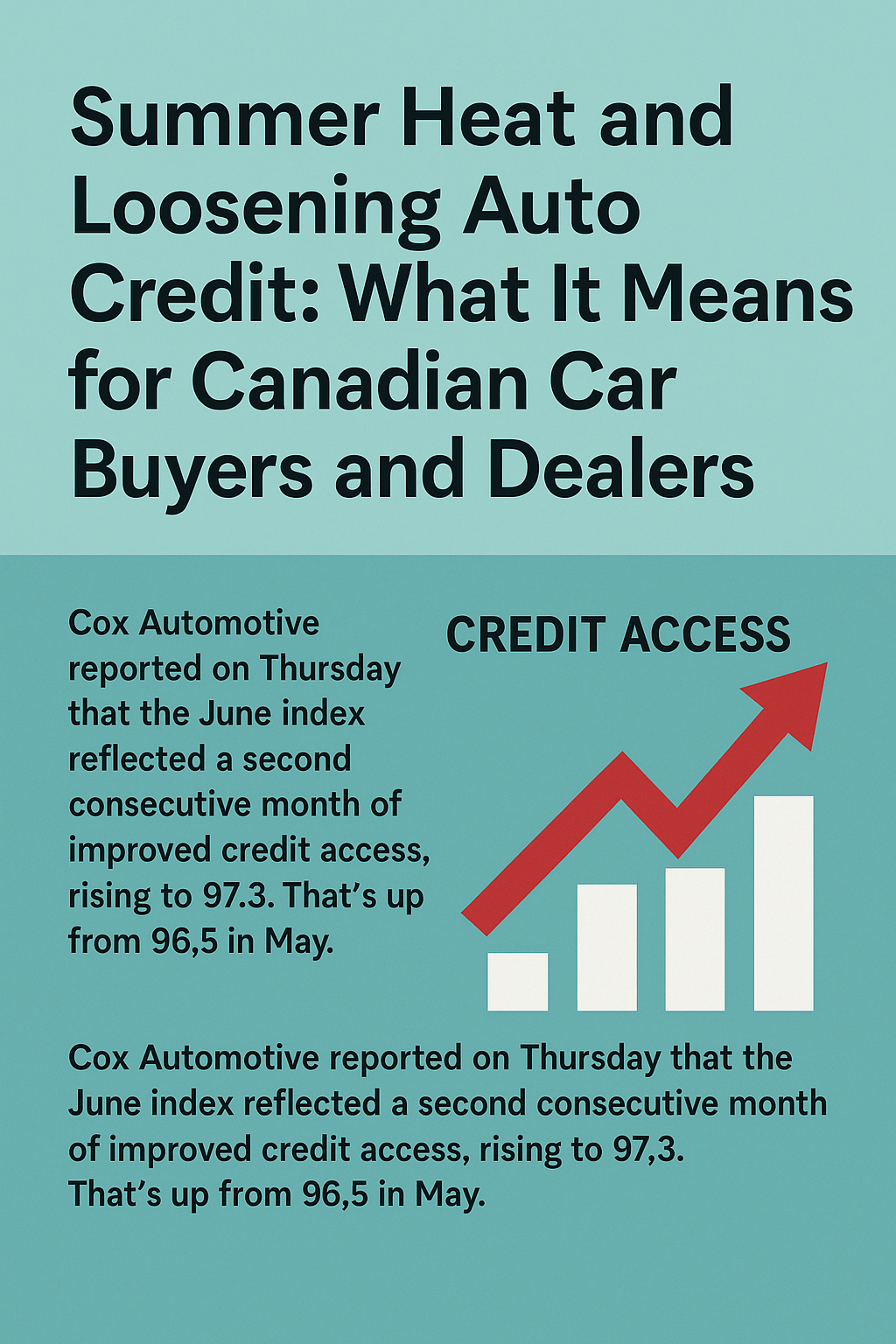Late payments on auto loans have hit a new high across North America in early 2025, and Canadians aren’t immune. The growing burden of vehicle ownership — from record-high insurance premiums to skyrocketing repair costs — is making it harder for many to stay on top of their car payments, particularly in the used-vehicle segment.
According to TransUnion, 1.4% of auto borrowers in Q1 were at least 60 days late, the highest level recorded for that period, surpassing both Q1 2024 and even the recession-impacted first quarter of 2009. While that figure reflects U.S. data, experts say Canadian consumers are experiencing a parallel trend, as affordability challenges mount in both countries.
📈 Delinquencies Still Rising Post-Pandemic
Used vehicle borrowers are bearing the brunt: 1.9% were 60 days delinquent in Q1, compared to 1.8% the year prior. In contrast, new-vehicle loans performed slightly better, holding steady at a 0.6% delinquency rate — but still elevated compared to pre-pandemic norms.
Canadian financial institutions are seeing similar strain. In its latest consumer credit report, TransUnion Canada noted that vehicle loan delinquencies have steadily climbed, particularly among borrowers with subprime and near-prime credit scores. Lending practices during 2021–2022 — a time when credit scores appeared artificially inflated due to government stimulus and reduced spending — may have led to a higher-than-expected default rate.
“We’re seeing the aftershock of decisions made during the early COVID era,” said Satyan Merchant, automotive and mortgage business leader at TransUnion. “Many of the borrowers financed during that time are now struggling more than anticipated.”
🇨🇦 Canadian Households Feeling the Pinch
The strain isn’t limited to loan balances. Owning a vehicle in Canada now costs significantly more than it did even a few years ago. Consider the following:
- Auto insurance premiums are climbing steadily across provinces, with rates in Ontario and B.C. seeing some of the sharpest increases.
- Gas prices, particularly in urban centres like Toronto, Vancouver and Montreal, continue to fluctuate near multi-year highs.
- Repair costs are up due to parts shortages and labour hikes — and more Canadians are holding onto aging vehicles as new car prices remain out of reach.
With the average monthly car payment in Canada surpassing $700 in some regions, it’s no surprise that more borrowers are falling behind.
🔍 New vs. Used Loan Risk
While new-vehicle financing tends to attract borrowers with stronger credit profiles — and thus sees lower delinquency rates — the used vehicle segment remains riskier. Lenders are taking note. Several Canadian auto finance firms have already adjusted their underwriting standards, focusing more on income verification, payment-to-income ratios, and regional default trends.
Merchant noted that while auto loans originated in 2024 are performing better than those from 2022–2023, they’re still lagging behind pre-pandemic levels from 2018 and 2019, when interest rates and inflation were lower.
“We’re not seeing a total collapse, but we are seeing signs of stress that didn’t exist five years ago — especially in the used vehicle space,” said Merchant.
💳 Not All Debt Behaving the Same
Interestingly, while auto loan delinquencies are rising, other forms of consumer credit — including credit cards — are showing more stability. In fact, some lenders are reporting historically low credit card delinquency rates, suggesting that many households are prioritizing revolving debt payments over fixed auto loans.
But auto debt remains uniquely vulnerable due to its structure: monthly payments are high, and unlike credit cards, loans don’t offer much flexibility if a borrower hits financial turbulence.
📊 The Bigger Picture: A Shift in Consumer Risk
While the Federal Reserve Bank of New York data focuses on the U.S., its insights apply broadly across North America. It found that auto loan balances fell quarter-over-quarter in early 2025 for only the second time since 2011, signalling a slowdown in new borrowing — possibly due to affordability concerns or tighter lender policies.
Yet total auto debt remains near historic highs, and serious delinquencies (90+ days late) continue to inch upward — a trend mirrored in Canada, where consumer debt levels are near record territory.
🛠️ What It Means for the Auto Finance Industry in Canada
The rising number of Canadians falling behind on car payments could prompt broader changes in lending practices and pricing. Some experts predict that interest rates on used-car loans will increase further to account for higher risk. Others suggest a greater focus on flexible financing options, such as balloon loans or subscription-style leasing programs.
For consumers, it’s a wake-up call to factor in total ownership costs — not just sticker price or monthly payment. As the market adjusts, credit counselling agencies are urging Canadians to revisit their budgets and avoid overextending themselves in a high-cost environment.
Bottom line? For Canadians, owning a vehicle is more expensive than ever — and it’s starting to show in the numbers. Whether you’re in the market for a car or managing an existing loan, the message is clear: budget carefully, understand the terms, and don’t underestimate the hidden costs of the road ahead.




